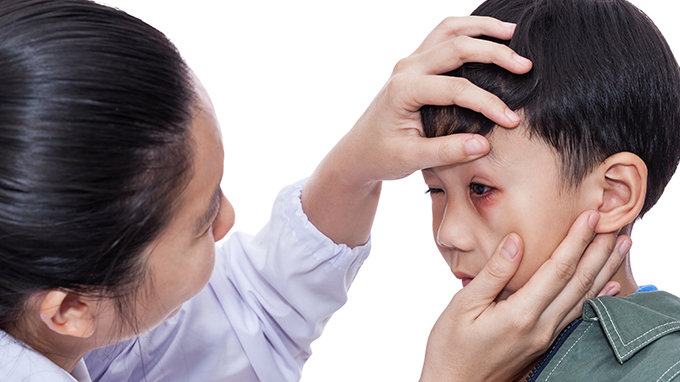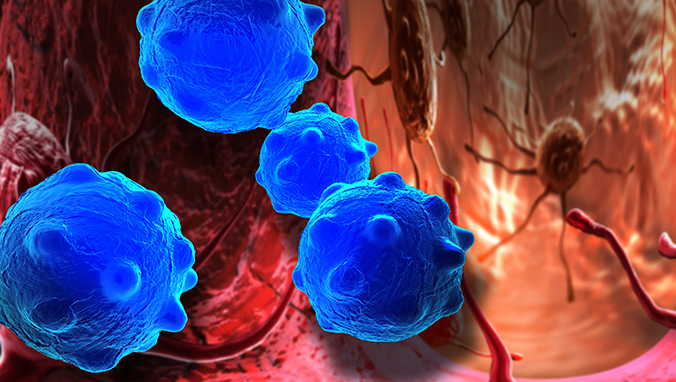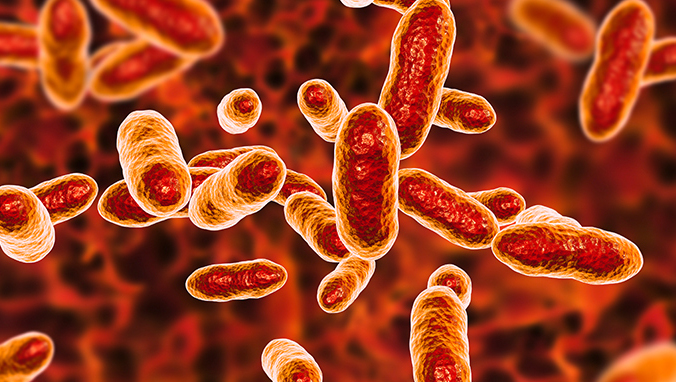Children's bronchial asthma diagnosis and prevention guide
Bronchial asthma (hereinafter referred to as asthma) is the most common chronic disease in childhood. The prevalence of childhood asthma in China has increased significantly in the past ten years, which has seriously affected children’s physical and mental health, and also brought family and society. Heavy mental and economic burden. Numerous studies have shown that early intervention and management of childhood asthma are conducive to disease control and improve prognosis. This guide is based on the "Children''s Bronchial Asthma Prevention and Treatment Routine (Trial)" revised in 2003, with reference to the asthma prevention and treatment guidelines and evidence-based medical evidence published in recent years at home and abroad, and combined with the characteristics of China''s pediatric clinical practice Provide guidance suggestions for the standardized diagnosis and prevention of childhood asthma.

[Definition]< /strong>
Bronchial asthma is composed of a variety of cells, including inflammatory cells (eosinophils, mast cells, T lymphocytes, neutrophils, etc.), airway structural cells (airway smooth muscle Cells and epithelial cells, etc.) and cellular components involved in chronic inflammatory diseases of the airways. This chronic inflammation leads to airway hyperresponsiveness in susceptible individuals. When exposed to physical, chemical, biological and other stimulating factors, widely variable reversible airflow limitation occurs, resulting in repeated attacks of wheezing, coughing, shortness of breath, and chest tightness Symptoms often occur or worsen at night and/or early in the morning, and most children can be relieved by treatment or by themselves.
[Diagnosis]
Children are in the process of growth and development. Asthmatic children of all ages have different anatomical, physiological, immune, and pathological characteristics of the respiratory system. The clinical phenotype is different, the response to drug treatment and the degree of coordination are different, and the diagnosis and treatment of asthma are also different.
1. Diagnostic criteria
1. Repeated attacks of wheezing, cough, shortness of breath, chest tightness, exposure to allergens, cold air, physical, chemical irritation, respiratory infections and Exercises, etc., often occur or intensify at night and/or early in the morning.
2. Sporadic or diffuse breathing can be heard in the lungs during the attack, mainly wheezing sounds in the expiratory phase, prolonged expiratory phase.
3. The above-mentioned symptoms and signs are effective or relieved by anti-asthma treatment.
4. Excluding wheezing, coughing, shortness of breath and chest tightness caused by other diseases.
5. People with atypical clinical manifestations (such as no obvious wheezing or wheezing) should have at least one of the following: (1) Positive bronchial provocation test or exercise provocation test; (2) Confirm the existence of reversible Sexual airflow limitation: ① Positive bronchodilator test: Inhalation of fast-acting β2 receptor agonist [such as salbutamol (Salbutamol)] 15 minutes after the first second forced expiratory volume (FEV1) increased ≥ 12% or ② effective anti-asthma treatment: After 1-2 weeks of treatment with bronchodilators and oral (or inhalation) glucocorticoids, FEV1 increases by ≥12%; (3) Daily expiratory flow rate of maximum expiratory flow (PEF) (continuous monitoring for 1 to 2 weeks )20%.
Conforming to Articles 1 to 4 or Articles 4 and 5 can be diagnosed with asthma.
Second, the characteristics of wheezing in children under 5 years of age
Clinical phenotype and natural course of wheezing in children under 1.5 years of age: Wheezing is a very common clinical manifestation in preschool children, not asthma Of preschool-age children also experience repeated wheezing. Wheezing in children under 5 years of age can be divided into 3 clinical phenotypes: (1) Early transient wheezing: more common in premature labor and parental smokers, wheezing is mainly due to delayed development of the lungs due to environmental factors, and the increase in age makes the lungs The development of the child gradually matures, and most children gradually lose their wheezing within 3 years of life. (2) Early onset persistent wheezing (refers to onset before the age of 3): The child mainly presents with repeated wheezing associated with acute respiratory viral infection. I have no atopic symptoms and no family history of allergic diseases. The symptoms of wheezing generally last until school age, and some children still have symptoms at the age of 12. For children younger than 2 years of age, the cause of wheezing attacks is usually related to infections such as respiratory syncytial virus, and children over 2 years of age are often related to infections by rhinovirus and other viruses. (3) Delayed wheezing/asthma: These children have a typical atopic background, often accompanied by eczema, asthma symptoms often persist into adulthood, and the airways have typical asthma pathological features.
But it should be noted that the first and second types of children’s wheezing can only be identified by retrospective analysis. Early intervention for children''s wheezing is conducive to the control of the disease, so it is not appropriate to classify such patients when they are initially treated.
Assessment of wheezing in children under 2.5 years of age: 80%Asthma above starts before 3 years old, persistent asthma patients with lung function damage, the lung function damage often starts in preschool age, so It is necessary to identify effective early interventions from wheezing preschool children who may develop into persistent asthma. However, there are no specific detection methods and indicators at present, which can be used to make a definite diagnosis of asthma in preschool-age wheezing children. Wheezing children are highly suggestive of asthma diagnosis if they have the following clinical symptoms: (1) frequent episodes of wheezing more than once a month; (2) cough or wheezing induced by activity; (3) intermittent non-viral infections Cough at night; (4) Wheezing symptoms persist until 3 years old.
Asthma Prediction Index can be effectively used to predict the risk of developing asthma in children who are wheezing within 3 years of age. Asthma Prediction Index: wheezing ≥ 4 times in the past year, with 1 major risk factor or 2 minor risk factors. The main risk factors include: (1) parents have a history of asthma; (2) diagnosed as atopic dermatitis by a doctor; (3) have the basis for sensitization by inhalation allergens. Secondary risk factors include: (1) evidence of food allergen sensitization; (2) peripheral blood eosinophils ≥4%; (3) wheezing unrelated to cold. If the asthma predictive index is positive, it is recommended to treat according to the asthma standard.
Despite the possibility of overtreatment, compared with the use of antibiotics, anti-asthma drug treatment can significantly reduce the severity of wheezing attacks and shorten wheezing time in preschool children. Therefore, for preschool children who have repeated wheezing and antibiotic treatment is not effective, it is recommended to use anti-asthma drugs for diagnostic treatment 2 to 6 weeks after reassessment. It must be emphasized that the majority of preschool wheezing children have a good prognosis, and their asthma-like symptoms may naturally ease with age. Therefore, these children must be reassessed regularly (3 to 6 months) to determine whether they need to continue anti-asthma treatment.
3. Diagnosis of cough variant asthma
Cough variant asthma (CVA) is one of the most common causes of chronic cough in children, with cough as the only or main manifestation, not accompanied by A noticeable gasp. Diagnosis basis: (1) Cough lasts> 4 weeks, often attacks or worsens at night and/or early in the morning, mainly dry cough; (2) No clinical signs of infection, or ineffective antibiotic treatment after a long period of time; (3) Diagnostic treatment of anti-asthma drugs is effective; (4) exclude chronic cough caused by other causes; (5) positive bronchial provocation test and/or daily PEF variability (continuous monitoring for 1 to 2 weeks) ≥20%;( 6) A history of atopic disease or allergen test for individuals or first- and second-degree relatives.
Related Articles

- Recognize childhood tics
- Typathia is mostly onset in childhood and adolescence. It is a disease characterized by tics or involuntary, repetitive, rapid, and movement twitching of muscles in one or more parts. In ad
- 2020-08-02

- Why did the baby's urine become muddy
- Normal people''s urine is light yellow, clear and transparent when they urinate, and they can''t see anything. They are left for a long time, especially when the weather is
- 2020-08-02

- When the child has high fever, parents pay attention to rehydration
- Recently, I went to the outpatient clinic a lot, and I saw many children whose body temperature exceeded 40 degrees. Some children have already received infusions during the day, and high
- 2020-08-01

- What is neuroblastoma
- With the continuous improvement of people’s living standards, work pressure is increasing. Due to excessive brain use, it is easy to suffer from neuroblastoma. Some people are very superfi
- 2018-08-09

- What is blastoma
- The prognosis of patients with different neuroblastomas varies greatly, that is, there is extensive tumor heterogeneity between neuroblastomas. According to different high-risk factors, neu
- 2018-08-09
